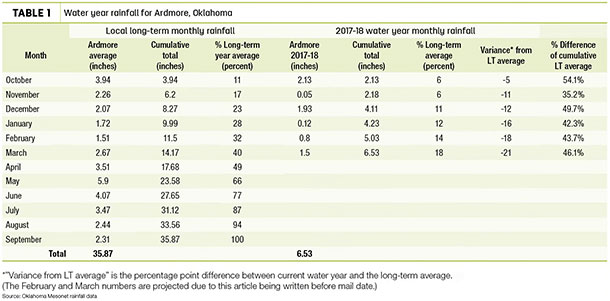Spring is an exciting time for agricultural producers as it represents one of the high points of optimism for the year. New beginnings, new births, new growth and renewed hope for the production year. As spring arrives, the yearly plans are brought into implementation.
So the question is: Are we truly prepared for our forage production year?
To be prepared, there are a couple items that should be at the top of our list.
Review and assess last year’s forage production
The first item is to review and assess the previous year’s forage production and to determine which management practices worked well, those that didn’t and what adjustments need to be made for this year.
We want to build upon our successes, continuing the practices that worked well for our forage systems and incorporating those into a routine that is considered and planned out annually.
We shouldn’t blindly follow a routine, as we need to take into account the reason for the management practice and determine if it is still applicable. There may also be management practices that did not turn out as expected. We need to understand the reasons for the outcome and determine how to adapt management to increase the likelihood of success.
Then there are new dynamics within the operation and our forage management plans that need to be accounted. Changes in livestock inventory, pasture establishment, the acquisition of additional property and expected weather trends can all factor into our forage management plans for this growing season.
Consider the extended weather forecast
The second item to consider: the extended regional weather forecast. If we stay current with the extended regional weather forecast, we are at least aware of the short- and long-term precipitation and temperature prognostications to combine with our experience with recent history.
An interesting tool to help quantify the soil moisture status going into the spring season is the water year precipitation. The water year is defined as the annual precipitation accumulation beginning with the recharge season. This season usually begins in the late fall when most forage production has slowed or stopped. For that reason, climatologists begin the water year in October and conclude in September.
Looking at the monthly precipitation patterns of the current water year in comparison to the long-term averages, we can observe the difference in variation between the current year and the long-term average.
The recharge period over the cool season is important to forage production as it directly impacts the early growing season. With adequate soil moisture, forages have a greater opportunity to fully express their potential assuming adequate nutrients, proper previous management and optimal temperatures.
However, if the soil has not had adequate soil recharge, spring production may lag behind expectations. Without favorable moisture conditions in the spring or early summer, annual forage production potential may be severely impacted.
In most forage systems, 65 to 70 percent of annual forage production occurs by the first of July. If moisture conditions are limiting during the spring and early summer following a dry winter, it is unlikely pastures will achieve average production yields. Soil moisture reserves in pastures coming out of winter dormancy drive the potential for peak forage yield at spring flush and total annual production.
If we look at the U.S. drought monitor, we can observe the regions of the country suffering from abnormally dry conditions and those that are more favorable. If favorable conditions exists currently, forage production for the early growing season is promising. However, for producers in areas under drought warning, it is important to assess your current water year conditions to gain perspective to the severity of the drought and potential reduction in forage production. To better understand how to use the water year as a management tool, see Table 1.
Click here or on the image above to view it at full size in a new window.
This example table represents the water rainfall in Ardmore, Oklahoma, from October 2017 through March 2018. The local long-term monthly rainfall is the 30-year average for Ardmore.
How to develop your own water year table
To develop a water year table, locate your county or regional monthly long-term averages for precipitation. Also, locate the most recent monthly precipitation totals beginning in October 2017. (Remember, the water year begins in October.)
Determine the difference to date between the long-term monthly averages and actual monthly rainfall. This difference can be expressed in multiple ways. In Table 1, it is expressed in two ways: First as the variance in percentage points between current water year and the long-term average with rainfall expressed as a monthly percentage of the long-term average rainfall.
The second method is more straightforward as the percent of the long-term cumulative monthly rainfall to date.
When precipitation is below average
This table indicates that Ardmore, Oklahoma, is about 46 percent below the long-term average (last column in the table), which corresponds to a 21 percentage point variance below the long-term cumulated average (second to last column).
If the region’s long-range forecast is for the La Nina effect to linger into the early summer, which typically results in below-average precipitation, a producer should consider the operation to be overstocked for the near future by at least 21 percent to upwards of 46 percent.
In anticipation of a drier-than-normal growing season and perhaps year, area producers should be preparing contingency plans to systematically lighten stock numbers and match forage demand to anticipated production.
If the water year table indicates below-normal moisture to date and the drier-than-normal trend is expected to continue into the growing season, a producer should plan to destock or supply additional forage from off-premise sources. Having a contingency plan for drought conditions identified and prepared ahead of time allows a producer to develop a better course of action to mitigate the financial and ecological outcomes for the operation.
When precipitation is above average
On the other hand, if you see yourself with well-above-average moisture at this time of year with a favorable forecast through the first half of the summer, you may have options to capture the additional benefit financially.
Knowing early in the growing season that you could at least temporarily increase stocking rate might allow you to position yourself to acquire additional livestock through a strategic purchase or lease grazing arrangement, especially if you are in reasonable proximity to a drought-stricken area.
Being able to allocate a portion of your resources to be managed separately for an additional revenue stream short term might be beneficial to you and the producers needing a location to temporarily place cattle.
Again, the water year table can provide a producer, especially one with a long-term stewardship ethic, with a tool to estimate the variance in above-average rainfall that has potential to be captured as grazeable forage.








